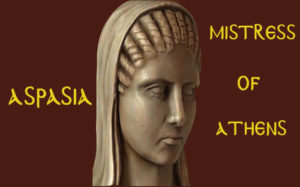As is true for the field of English Studies in general, the objects of study for rhetoric of identity are vast and interdisciplinary. Texts, both human and not, of all kinds become points of analysis under a rhetorical lens. Traditional objects of study are written (books and the like) and oral (speeches predominantly) with attention to addressing the major questions surrounding the rhetor and the audience.
- What are the rhetor’s intentions and how does he/she want to be perceived?
- How much of the rhetor’s identity is determined by the audience? (Depew).
Phillip Sipiora, for example, analyzed Darwin’s book Origin of the Species with attention to the identity Darwin as author/rhetor created because he knew his largely religious audience would not readily accept his scientific ideas. Ryan Lee Teten demonstrates analysis of oral texts in looking at State of the Union Addresses from the founding fathers to the current presidents to look at identification rhetoric usage in addressing dual audiences of Congress and the general public.

Example of Multiple Identity Constructions via Social Media
The texts that dominate objects of study within the rapidly evolving twentieth and twenty-first centuries have expanded to include visual arguments, social media presences, and physical bodies just to name a few. Social media particularly has prompted much identity research as, in many ways, online identity has become a type of simulacrum slipping from a reflection of basic reality to little or no relation to the reality of the original identity (Baudrillard 1560). The ideal identity presence via digital platforms can be rhetorically crafted for any number of audiences.
Twenty-first century conversations are largely building on the latter object of study, physical bodies, by exploring issues of gender and cultural impact on identity. Judith Butler is maintaining a dominant voice in the conversation for both professional and personal reasons. By challenging the norm and claiming all gender as performative, she effectively undermines many identity labels that promote a binary of the Other.
Karen Kopelson is another voice in this discussion. The pedagogical nature of some of her work is of interest to me as I hope to find a niche in researching student identity constructs as one of my primary objects of study. Her queer pedagogical approach evolves from her claim that
“any aspect of identity, or any intersection of aspects of identity, can be ‘queered’” (25).
Her complete rejection of identity-based pedagogical approaches left me questioning the ethical implications of a queer pedagogical approach that has “the express intention of disrupting students’ identity-based expectations” or that attempts to keep “them [students] ‘off balance’ by deliberately shifting among and between positions of provocative skepticism and fervent belief” (20, 25). As one instructor within Kopelson’s example stated, some students need an essentialist identity for a time of transition into a more unstable mindset. This argument is just one of many examples connecting rhetoric of identity to the classroom.
These snapshot examples of current conversations and objects of study stem from a longstanding rhetorical history dating back to the Sophists and Socrates. While objects of study were largely limited to oral texts at this time, written texts became just as dominant in research once the printing press evolved and rhetoric was re-birthed in the late 1800s. The establishment of the canon gave boundaries for accepted and respected objects of study until the feminist movements of the twentieth century. The canon then became an object of study for different purposes: highlighting its many gaps. Marginalized groups were not, and still are not equally, represented. Those lost and missing voices became a dominant area  from which to pull objects of study. Aspasia, as Dr. VanHaitsma stressed through her article selections earlier this semester, was one of the first objects of feminist study. This attempt to balance the voices of the canon has led the field to current conversations of queering objects of study. These feminist and queer theoretical lens inherently build upon the tradition of rhetoric of identity.
from which to pull objects of study. Aspasia, as Dr. VanHaitsma stressed through her article selections earlier this semester, was one of the first objects of feminist study. This attempt to balance the voices of the canon has led the field to current conversations of queering objects of study. These feminist and queer theoretical lens inherently build upon the tradition of rhetoric of identity.
A common thread of most of our course readings and discussions this semester has been the volatile boundaries and border crossings of the multidisciplinary field of English studies. My research of rhetorical conversations of identity connect in many ways to this crisis as English majors often find themselves in careers not entirely relatable to the core subdiscplines of English Studies. Even teaching is outside the scope of some English programs of study. For these reasons, some scholars, such as Matthew T. Pifer, argue for a reconceptualization of professional identity for English majors as generalists or teacher-scholars. This new professional identity would alter several aspects, from scholarship to epistemology, of the field (188-190). Perhaps the generalist can become a new object of study for rhetoric of identity research. How does the label of teacher-scholar affect identity construction for graduates?
Works Cited
Baudrillard, Jean. “From The Precession of Simulacra.” The Norton Anthology of Theory and Criticism. 2nd. Ed., edited by Vincent B. Leitch, W.W. Norton & Company, 2010, 1553-1566.
Depew, Kevin. Personal interview. 5 October 2016.
Pifer, Matthew T. “On the Border: Theorizing the Generalist.” Transforming English Studies: New Voices in an Emerging Genre, edited by Lori Ostergaard, Jeff Ludwig, and Jim Nugent, Parlor Press, 2009, 179-194.
Sipiora, Phillip. “Ethical Argumentation in Darwin’s Origin of the Species.” Ethos: New Essays in Rhetorical and Critical Theory, edited by James S. Baumlin and Tita French Baumlin, Southern Methodist University Press, 1995, 265-292.
Teten, Ryan Lee. “‘We the People’: The ‘Modern’ Rhetorical Popular Address of the Presidents during the Founding Period.” Political Research Quarterly, vol. 60, no. 4, Dec. 2007, pp. 669-682. Ebscohost, doi: 10.1177/1065912907304495. Accessed 27 Oct. 2016.